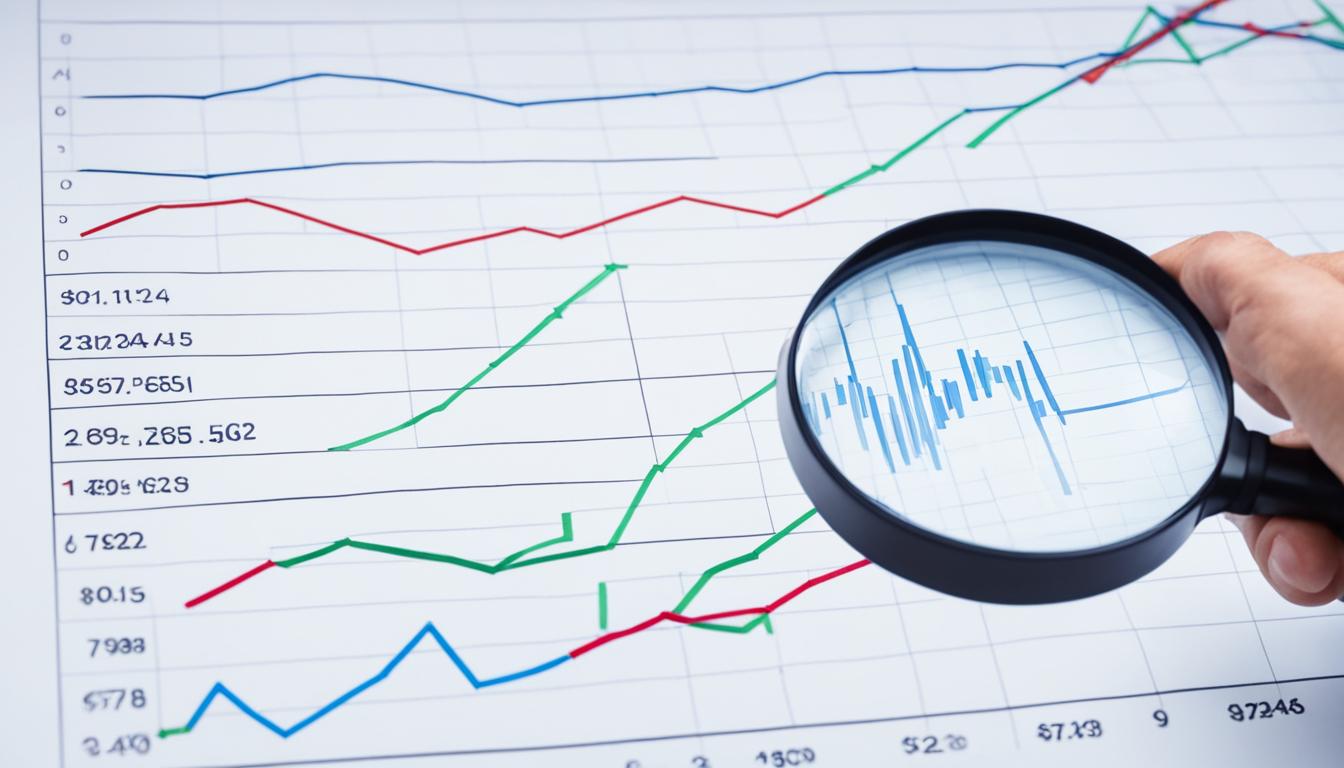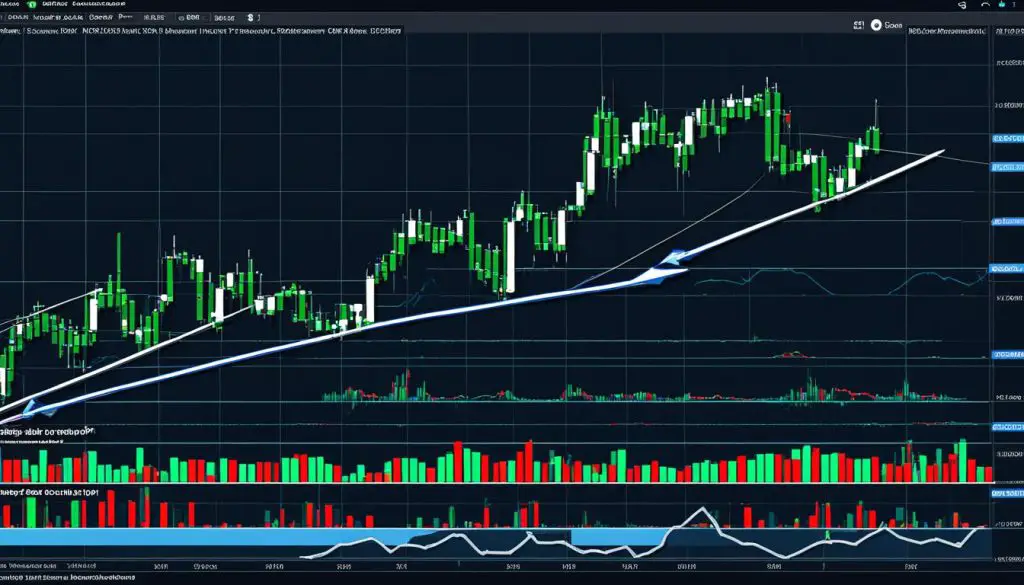Engaging in trading with leverage is akin to wielding a double-edged sword—it has the potential to magnify both profits and risks. This advanced financial maneuver allows traders to surpass personal capital limits, affording them the opportunity to amplify their positions in the market through leveraged stock trading. When using leverage in trading with a leverage calculator, individuals essentially utilize borrowed capital to bolster their investment strength, injecting a greater degree of intensity into both outcomes and opportunities.
The dynamics of leverage in trading rests on the concept of margin trading, requiring traders to leverage a margin deposit as a fulcrum to lift larger trades. This margin—the trader’s initial investment—serves as a “good faith” deposit and arms the trader with the capability to command a position that could significantly exceed this deposit value. Brokerage firms, guided by regulatory frameworks like Regulation T, usually set the borrowing limit up to 50% of the purchase value for stocks.
Inherent in its nature, the strategy boosts not only potential returns, but also the volatility and risks present within a trading portfolio. Implementing a margin calculator in trading is crucial to navigate these tumultuous waters with caution, making informed decisions while benefiting from the increased purchasing power that leverage offers. It is not just simple profit augmentation; it is an intricate balance of risk and reward that demands respectin in all markets.
Understanding the Fundamentals of Leveraged Trading
Engaging in leveraged trading strategies means signing up for a journey where accurate insights and understanding of the mechanics of trading with leverage are essential. It’s a world where savvy traders amplify their trading potential, leveraging the markets to tap into greater profit opportunities. It is important to know the different between 1:100 leverage and 1:500. However, the sword of leverage cuts both ways, magnifying risks just as it does rewards.
Defining Leverage and Its Purpose in Trading
Leverage in trading is a double-edged sword; while it can be a potent tool for magnifying profits, it amplifies the risks just as much. To comprehend the purpose of leverage, imagine the robust mechanism that enables traders to multiply their market exposure beyond their actual investment capital. Margin-based leverage allows traders to open positions that far exceed the personal capital committed, by using funds borrowed from their broker — a practice known as margin trading.
Comparing Forex Leverage to Other Markets
When it comes to margin trading, forex leverage stands out with its substantially higher ratio, often offering up to 100:1 leverage. This stark contrast makes forex markets uniquely attractive for leveraging strategies. However, as alluring as it sounds, the high stakes of forex leverage demand that traders maneuver with acute awareness and precision, navigating the fine line between amplified gains and escalated risks.
Assessing Risks: The Volatility and Dangers of Trading on Margin
The lure of high returns from trading with leverage must be balanced against the considerably higher risks it carries. The dangers of trading on margin become most evident when the market moves unfavorably, and the amplified losses come into play — sometimes leading to the dreaded margin calls. The key is a disciplined approach to leverage, aligning it with one’s risk tolerance to navigate the tumultuous waters of leveraged trading.
- Trading with leverage optimizes capital usage but requires careful risk management.
- Leveraged trading strategies must factor in market conditions and a trader’s experience level.
- Margin trading allows for greater market exposure, yet risks of leveraged trading must always be acknowledged.
- Real leverage arround, 50:1 leverage, provides a clearer assessment of risk exposure relative to real trading capital.
Trading with Leverage: Strategies and Best Practices
When it comes to effectively managing leveraged trading strategies, supreme caution and a solid understanding of leverage are both compulsory. Proponents of using leverage in trading emphasize the paramount rule: only take on leverage when the odds are in your favor. By applying 1 20 leverage discriminately, traders can capitalize on their insights into market trends and anomalies.
As a part of trading with leverage best practices, the meticulous allocation of actual trading capital is advocated, suggesting the incorporation of conservative leverage amounts. This approach guarantees that the risk is modulated in accordance with the trader’s capital base. It’s a fine balance; too much leverage can amplify risks, while too little may not yield the desired financial returns.
- Apply leverage to trades that display a clear advantage.
- Use a fraction of the available margin to provide a buffer against market volatility.
- Set loss limits to a small percentage of capital per trade, preferably below 3%.
- Implement stop-loss orders to safeguard positions against severe market swings.
The realm of forex trading underscores the elevated significance of leverage due to the market’s pip-oriented nature. Minimal currency value changes, when leveraged, can lead to significant financial outcomes, thus reinforcing the necessity for stringent capital loss limits on trades.
| Strategy Component | Best Practice | Expected Outcome |
|---|---|---|
| Capital Allocation | Use smaller 10 to 1 leverage on wider stop margins | Mitigate risk while preserving capital |
| Margin Usage | Avoid utilizing full available margin | Allow room for market fluctuations without margin calls |
| Capital Loss Limits | Impose strict loss limits per trade | Protect from large-scale capital depletion |
| Stop-Loss Orders | Use stop-loss orders to limit exposure | Restrict losses during adverse market movements |
Testing leveraged trading strategies extensively via demo accounts is a shrewd step prior to engaging real capital. It offers a risk-free environment to refine trading plans and adjust to the nuances of using leverage in trading. In this sandbox, traders are better equipped to experiment and understand the dynamics of amplified trading value without the fear of real financial repercussion.
Conclusion
The terrain of leveraged trading is ripe with potential, but traversing it requires a robust understanding of the risks and strategic dexterity in managing trading risk. Well-informed traders are those who know the ins and outs of using leverage in trading and approach each transaction with precision. Meticulously planning the leverage ratio and aligning it with prevailing market conditions as well as personal risk tolerances, forms the cornerstone of proficient leverage management.
Managing Risk in Leveraged Trading
Developing competencies in managing leveraged trading risk is not just advisable; it is essential for anyone utilizing leverage to enhance their trading potential. This proficiency entails an appreciation for both margin-based and real leverage and their impacts on a portfolio. Adhering to calculated trading strategies and not shying away from the use of stop-loss orders can mitigate risk, provision for market volatility, and protect in instances where markets may move against a trader’s position. Navigating through the tumultuous waters of leveraged trades demands that traders are prepared for all outcomes, with pre-planned responses to preserve capital and ensure longevity in the trading sphere.
The Benefits of Responsible Leverage Use
When executed with responsibility and foresight, the benefits of trading with leverage can dramatically outweigh the risks. Responsible leverage use not only amplifies traders’ ability to participate in markets, but also serves to expand potential returns on investment, leveraging capital to seize opportunities that may otherwise be inaccessible. Leverage in Crypto or stocks can help increase profits. While the allure of amplified profits is tantalizing, the hallmark of a sagacious trader lies in their capacity to harmonize the pursuit of these profits with a well-calibrated risk management strategy. For traders who master this balance, leverage becomes a formidable tool, augmenting their strategic options and potentially leading to considerable achievements in the trading domain.
FAQ
What is trading with leverage?
Trading with leverage involves using borrowed funds from a broker to invest in financial markets, allowing for larger trades with a smaller amount of actual capital. When you trade on margin, you essentially borrow money to increase your buying power, which can amplify both potential gains and losses.
What are the risks of margin trading and leveraged trading?
The main risks include the amplification of losses, margin calls, and the potential for rapid capital depletion. As leverage increases, the impact of market volatility on your position is magnified, and losses can accrue quickly. A margin call occurs when your equity falls below a certain point, and additional funds may be required to keep positions open.
How can one manage risks when trading on margin?
Traders can manage risks by adopting a conservative approach to leverage, setting stop-loss orders to limit potential losses, monitoring positions closely, and maintaining a sufficient margin above the minimum requirements to guard against margin calls.
What are some leveraged trading strategies?
Acting on trades with a clear advantage, using protective stop losses, and keeping leverage levels conservative are crucial strategies. Traders should calculate the leverage ratio carefully for each trade, set realistic profit and loss targets, and avoid using the maximum leverage available to maintain flexibility for market changes.






